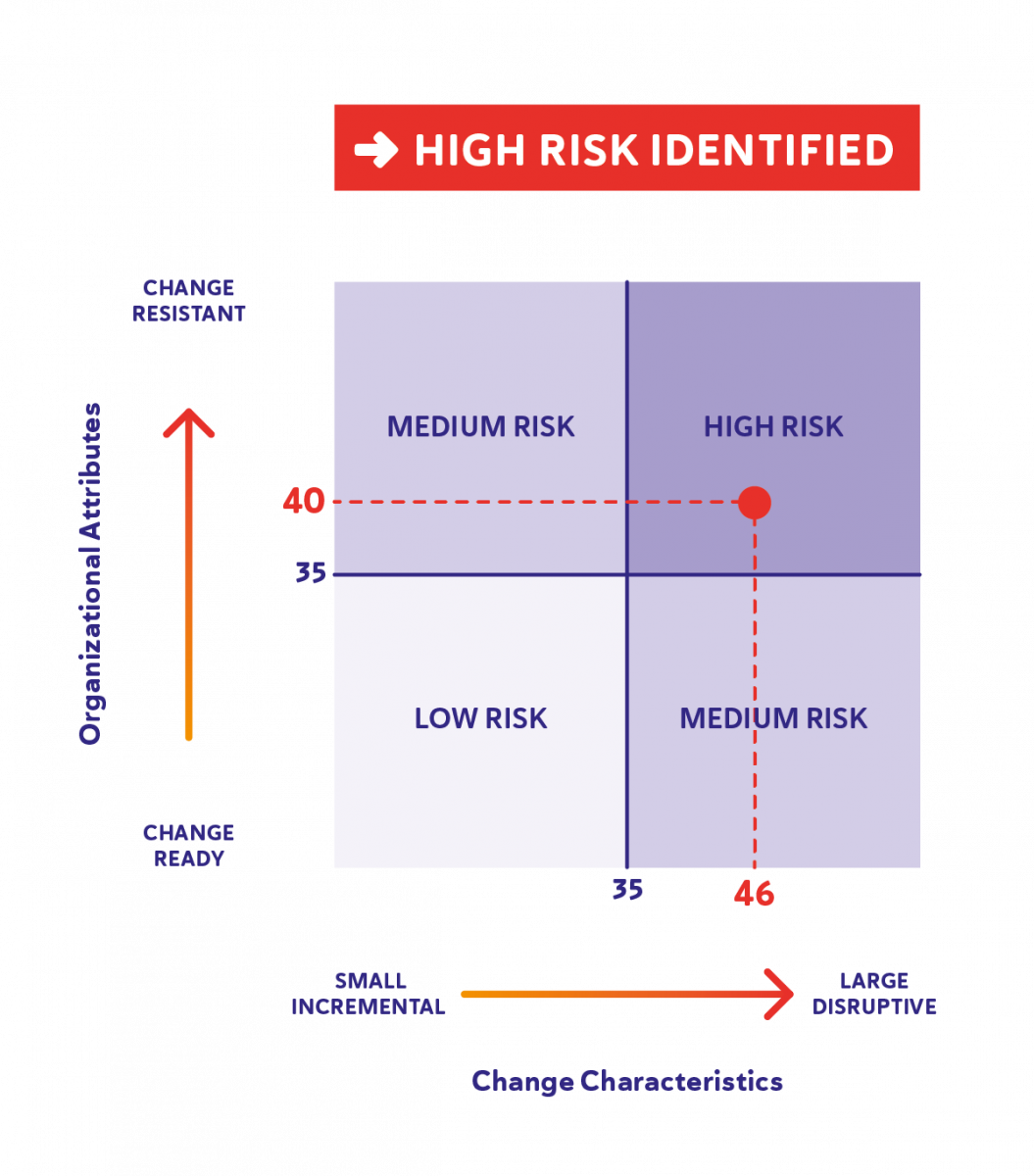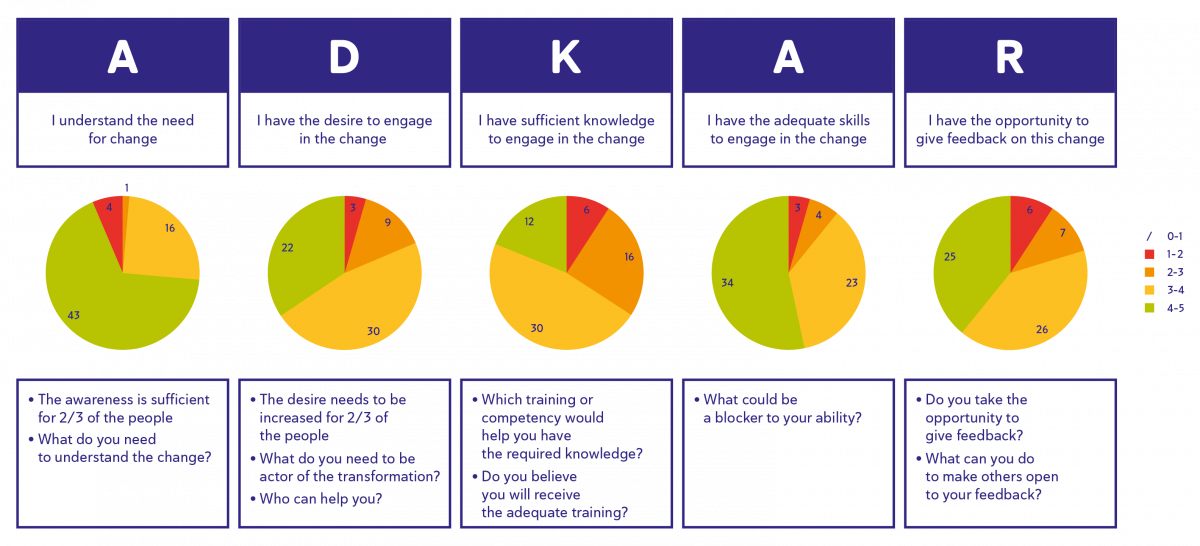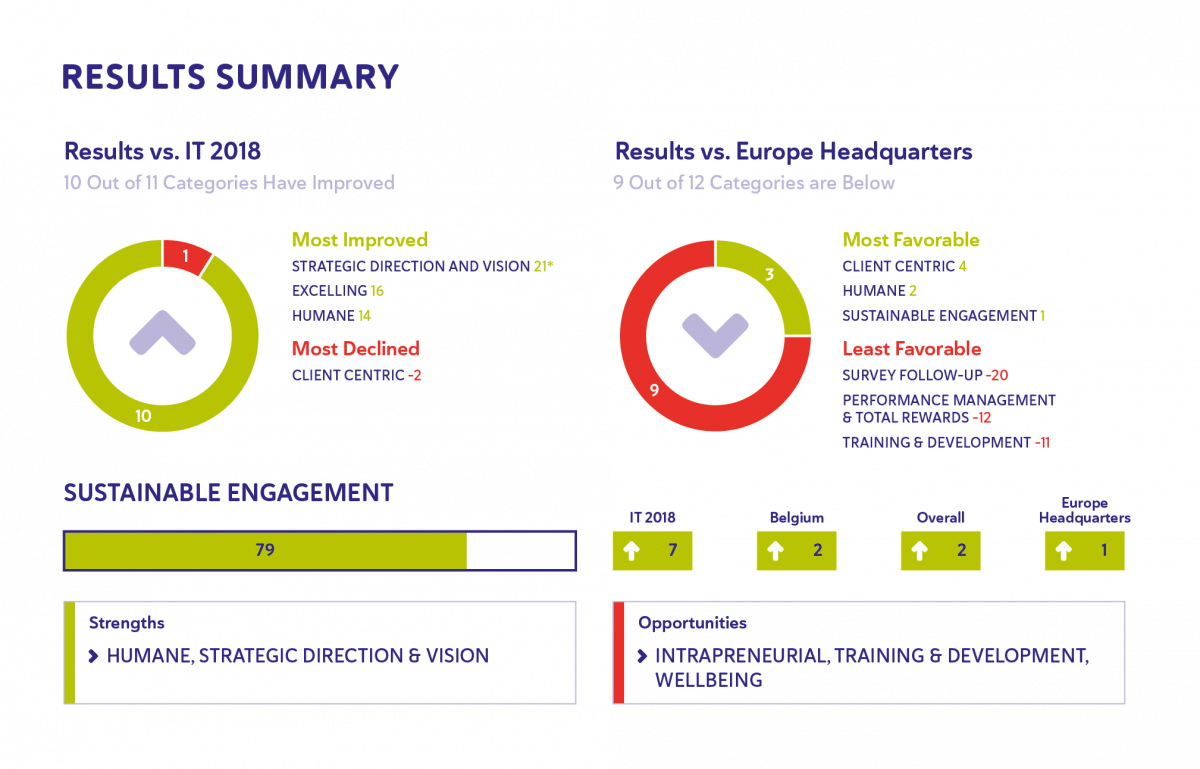This is how they used Change Management to shift mindsets and succeed.
19 May 2022
This organisation leveraged CM best practices to push engagement rates up for maximum impact.
Article written by Pauline NAVEAU et Vincent PIEDBOEUF
19 May 2022
This organisation leveraged CM best practices to push engagement rates up for maximum impact.
Article written by Pauline NAVEAU et Vincent PIEDBOEUF
Prosci Europe's case studies offer practical insights for organisations wishing to make changes that stick.
Why should I read?
Time frame – 2018 (start) – 2020 (first results)
Sector – Banking.
Catalyst – Merger.
Type of change – Implementation of a New Target Operating Model (TOM) with a heavy emphasis on mindset and behavioural change.
Baseline (current situation). This IT transformation was launched in the context of a multi-year business strategy, coming after a merger which raised organisational issues where activities were duplicated. The organisation's target of increased revenues, the need to find a new way of addressing customers, and an ever-more demanding regulatory environment were also important key drivers.
Focusing on two strategic pillars – digital experience/digitalisation and customer-centricity – our client embarked on a change journey, seeking to modernise its IT infrastructure, create a new application landscape, new IT processes and a new operating model (TOM).
Prosci Europe contributed its expertise to the new TOM and quickly emphasised the need to create Awareness and Desire for the change (see ADKAR Assessment). Bringing the vision to life would imply a shift in mindset among teams that became the focus of CM efforts. As the scope and size of the change called for a complex cultural transformation, dealing with the people side of change with the right methods and tools was vital to ensure long-term success.
Redesigning roles and creating new processes called for the co-construction of new mindsets and behaviours. Prosci Europe used multiple levers to accelerate cultural change and encourage the adoption of roles: empowering newly appointed Service Line Managers, creating new IT teams and - moving up a level - coaching leaders to help them model expected behaviours (IT Dirco).
Prosci Europe worked extensively with PROSCI's Change Management methodology, which eventually became the client's standard for anything CM-related. Preliminary assessments helped gain a thorough understanding of the change, its purpose, risk profile, and impacts. As part of managing the change process, Prosci Europe conducted multiple ADKAR assessments to keep track of people's progress along the individual change continuum. This was a fundamental part of ensuring that the right people took the right actions at the right time to foster appropriation and engagement.
1. The 4P (Project, Purpose, Particulars, People) model helped give meaning and direction, creating clarity of purpose and aligning all 3 actors of the PCT (Sponsors, Project Manager, Change Manager) with the vision right from the outset. To build a cost-efficient operating model that would encourage customer-centric practices (purpose), the organisation articulated the change around 4 axes (particulars): infrastructure (new data centre), application (new future-proof group application landscape), process (new processes to ensure delivery quality and control) and people (most fitted organisation and skills to support the change – TOM). The model also proved a handy tool to map all the groups impacted by the change – beyond the IT division itself (people).
1.2 The PROSCI Risk Assessment was used to evaluate the profile of the change and customise the approach. The combined analysis of the Change Characteristics and Organisational Attributes revealed that the project entailed considerable risk, meaning that the probability of not achieving the objectives was significant. Overall, the bank lacked CM capabilities, and some change fatigue had already settled (organisational attributes). The change per se was complex (change characteristics), both because of its scope (processes, behaviours), size (multiple groups affected in different ways) and timeframe (multi-year).

1.3. ADKAR assessments. The ADKAR model highlighted where staff members initially stood about the organisational change after the first communication was issued (Awareness – Desire – Knowledge – Ability – Reinforcement). A relative lack of awareness of the need to change and poor desire to participate in the organisation redesign suggested that, without a robust CM strategy, the change process would be long and entrenched with major roadblocks (2/3 of the respondents). These insights informed the organisation's communication strategy (Story for Change or "why" of the Change) and subsequent resistance management plans.

After assisting the IT Dirco in its efforts to craft the "Story for Change" and define the exact mindset attributes that might play a critical role in the division's transformation and long-term sustainability, Prosci Europe designed two main workstreams to solve the following core issues. Note that the set of targeted actions relied heavily on on-site coaching:
WS1 - How do we help the people acquire the right mindset to support the change and succeed?
WS2 - Who will be in charge of facilitating and following up on the change?
The goal of the second workstream was to set up and run a Service Line Manager (SLM) community made up of freshly appointed managers (new Operating Model). Designed to break silos and promote the exchange of managerial experiences, the SLM community would work to improve working routines and ensure effective change. Therefore, the unit was not concerned with technical issues but with communication activities, coordination, support, feedback, standardisation, and continuous improvement. Prosci Europe assisted with or contributed to:
Specific Change Management KPI identified at the outset of the project facilitated progress monitoring at both the individual and organisational levels and allowed for the swift detection and correction of failures. Developing and nurturing internal CM resources is also core to Prosci Europe's praxis to ensure continuity of operations and hand over the reins of Change Management. Coached by Prosci Europe and supported by internal Change Managers, people Managers were provided with CM training as part of their upskilling journey.
As with any change, a big part of the challenge is to carry out the implementation on time without causing too much interference with day-to-day business operations. Running BAU and building (the change) simultaneously is a delicate kind of balancing act. In this case, not only were the milestones achieved in due course; Change Management efforts had a very clear impact on adoption and people engagement.
Let's turn the clock back a couple of years before the transformation was initiated. An engagement survey conducted in 2018 suggested that only 4 out of 11 categories under scrutiny were progressing well (customer-centricity, strategic direction and vision, teaming up), with an alarming decline observed in performance, line management, and well-being. Two years after the start, a second mirror survey showed significant improvement in 10 categories; the "sustainable engagement" score in the IT department had also increased from 71% to 79%[1]. Of particular significance was the fact that people dimensions (Excelling and Humane categories) registered the most impressive progress.
More generally, engagement rates proved to be substantially higher in the IT division than anywhere else in the organisation. The following graph indicates a 7 point-increase over two years (2018-2020), compared to a much more moderate improvement elsewhere (1 or 2). Although many dynamics are at play in a project of this scope and size, steps taken to develop and professionalise internal CM resources have been instrumental in generating buy-in and commitment among teams. They were key to delivering positive outcomes on time … and fundamental to the long-term success of this transformation.

[1] The "sustainable engagement" score is based on an assessment evaluating the following statements: "I am proud to be part of this organisation"; "I believe strongly in the goals, mission and objectives of this organisation"; "I have the equipment/tools/resources to do my job effectively"; "I work beyond what is required to help this organisation succeed"; "I would recommend this organisation as a good place to work"; "My work gives me a sense of personal accomplishment"; "The people I work with usually get along well together"; "There are no substantial obstacles at work to doing my job well".